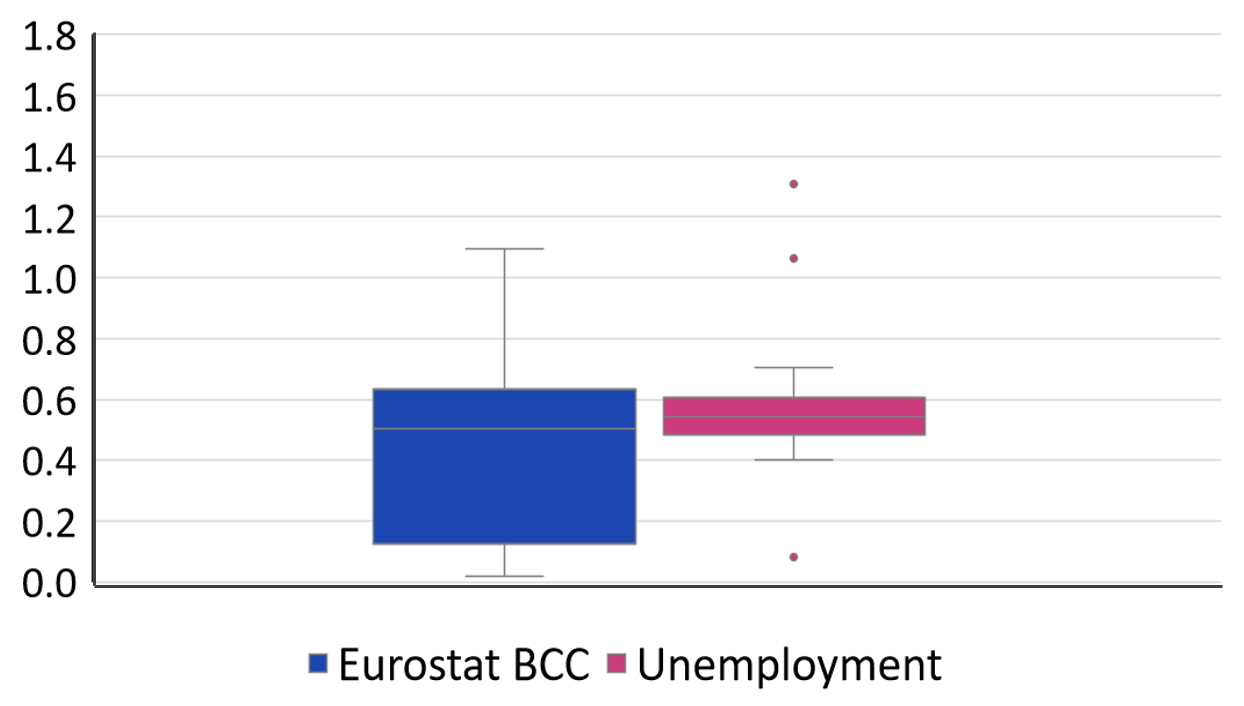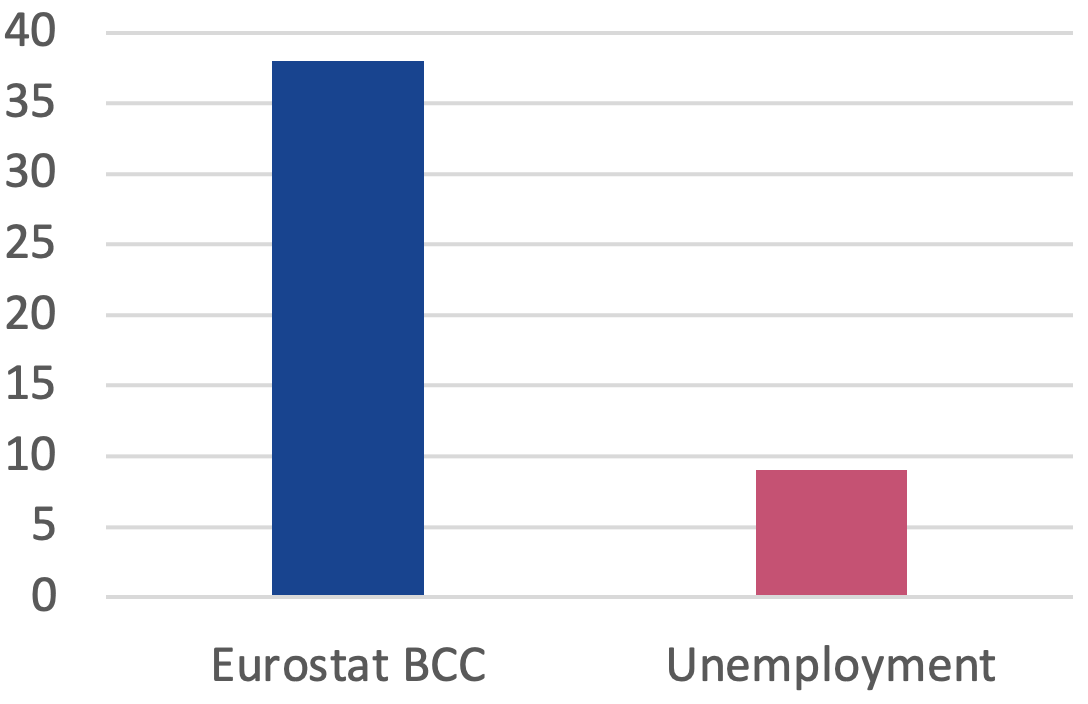Editors' note: This column is a lead commentary in the VoxEU debate on euro area reform.
A fiscal stabilisation capacity is missing in the architecture of the euro area. It could be needed to cushion large shocks that both monetary policy and national fiscal policy cannot adequately address, either due to limited policy space and/or the asymmetric nature of the shock itself (e.g. Codogno and van den Noord 2020).
Filling this gap now seems more important than ever, as the likelihood of large asymmetric shocks is poised to increase, and policy space is limited. Large external shocks that undermine euro area stability are more likely given the ongoing war in Ukraine, extreme weather events, and transition risks stemming from climate change or the pandemic. At the same time, high inflation and high debt imply stretched common monetary and national fiscal space in many member states.
As of now, there are no permanent and dedicated instruments to foster macroeconomic stabilisation in response to external shocks that work through public risk sharing. The Support to mitigate Unemployment Risks in an Emergency (SURE) instrument is temporary, fully disbursed, and designed to provide a one-time relief from the pandemic. Private risk sharing complements (rather than substitutes) public risk sharing and remains limited, given the incomplete banking and capital markets union and insufficient cross-border labour mobility. National fiscal buffers could alleviate the need for a fiscal stabilisation capacity but building them to sufficient scale will take time and would compete with the large green spending needs.
While other (mostly temporary) EU instruments, including the Recovery and Resilience Facility, can support short-term stabilisation, their primary objectives differ and may not always align with fiscal stabilisation. Furthermore, they often require longer-term planning, undermining their ability to quickly respond to shocks.
A loan-based fiscal stabilisation capacity
In a recent paper (Misch and Rey 2022), we propose a loan-based fiscal stabilisation capacity for the euro area, referred to as ‘stability fund’. This fund would be administered by the European Stability Mechanism (ESM) and provide loans on favourable terms in times of external shocks for short-term stabilisation purposes. The loan maturity would be up to ten years with a three-year grace period, and maximum loan amounts would be 4% of GDP within an overall envelope of €250 billion. The interest rates would reflect funding conditions of the ESM.
The specific design features strike a balance between allowing for speedy disbursements and adhering to appropriate conditionality. Activation of the fund would be based on expert judgement and/or quantitative indicators including unemployment-based metrics. Eligibility would require that a country’s public debt be deemed sustainable and that the country is not subject to an excessive deficit procedure, internal imbalance procedure, or a macroeconomic adjustment programme.
These criteria would incentivise prudent fiscal behaviour in economically good times and allow for swift loan disbursement, but also ensure that loans are not provided in response to internal imbalances or policy errors. The loans would not be earmarked for specific purposes to avoid delays in times of crises. As a safeguard, they would have to be used to enhance macroeconomic stability through appropriate fiscal measures and debt management operations which excludes obvious misuse of public resources. Upon request for support from the stability fund, the ESM and the European Commission, in liaison with the ECB, would assess whether eligibility and activation conditions are met (and carry out other standard assessments as required for any loan under the ESM treaty).
Many other economically sound proposals for a euro area fiscal stabilisation capacity exist. These differ in their degree of risk sharing and the mix of grants and loans they provide. The most common proposals are insurance funds that, in their basic form, pool annual contributions from member states to finance grants in times of crises. The grants are often earmarked for unemployment benefits, either directly through payments to individuals or indirectly through co- or re-insuring national unemployment insurances.
Another type, rainy day funds, also provide grants, but only up to the amount of past national contributions. To supplement the grants, member states can also borrow against the pool of contributions (e.g. Lenarčič and Korhonen 2018). The last type, revolving funds, to which the stability fund proposed here belongs, do not require contributions and only provide loans.
The stability fund offers substantial macroeconomic benefits
To evaluate and compare the stability fund to existing proposals we benchmark against best-practice principles:
- the ability to mitigate moral hazard, incentivise good fiscal behaviour, and avoid permanent transfers to individual countries;
- the cost and time to implement a fiscal stabilisation capacity;
- the cost of participation once it is operational;
- the size of the expected stabilisation effects.
The trigger mechanism also matters and should allow for swift activation while, avoiding false alarms. However, its design is largely independent from the type of the underlying fund.
Table 1
Source: Authors’ compilation
While other types of funds can have larger stabilisation effects, conceptually, the stability fund would have two clear advantages. First, since loans need to be repaid, concerns about potential moral hazard or permanent transfers are addressed from the onset. Our eligibility criteria would further incentivise fiscal prudence. Second, the stability fund could be established more rapidly and cheaply, not least because it would use existing infrastructure and not require a treaty change. To avoid moral hazard, insurance funds include provisions that lead to increases in contributions for countries that have benefitted from grants. While economically necessary, in practice such provisions increase complexity and erode (but mostly do not fully remove) the financial attractiveness of grants relative to loans, which we discuss in more detail below. This is because (some of) the grants are paid for by (higher) future contributions. In addition, insurance and rainy-day funds require recurring contributions, even if the fund is not used, making participation more costly.
We also run simulations to assess the implications had the stability fund existed since the early 2000s. We expand on the methodology of Carnot et al. (2017) and conduct a frequency study to see how our proposed scheme would have functioned had it existed in the past. We assume that a loan disbursement to a particular country occurs if (a) the numerical trigger condition is fulfilled, (b) eligibility criteria are met, and (c) the loan is economically advantageous relative to prevailing market access conditions of the particular country.
In the simulations, the numerical trigger condition is based on changes in unemployment. The fund is activated when the unemployment rate is above the short- and long-term unemployment average. This numerical trigger is largely in line with the literature, given the timely availability, reliability, and high frequency of unemployment data; the choice of the trigger is conceptually largely unrelated to the type of the fund. In the simulations, we benchmark this trigger using a hypothetical and perfect indicator of recessions based on Eurostat Business Cycle Clock (BCC) data available only ex-post.
The simulation results strongly support the specific design features of the stability fund. First, our assessment suggests that, in isolation, an unemployment-based trigger is unreliable and needs to be complemented by expert judgement to avoid missing major crises and false alarms as we suggest. Second, we find that the volume of loans made would have never exceeded 40% of the overall envelope, making the size of the stability fund and of the individual loans appear realistic.
Figure 1a Precision of unemployment trigger in identifying actual recessions
(in % actual recessions)
Note: We benchmark the unemployment-based trigger against Eurostat’s business cycle clock (BCC) data. The unemployment-based trigger is assumed to correctly identify recessions if it is triggered within two quarters of the BCC indicator. A recession is assumed to be missed if no unemployment-based trigger event occurs within two quarters of the start of a recession as per BCC data.
Source: Misch and Rey (2022)
Figure 1b Size of loan portfolio by trigger indicator
(% of €250 billion)
Note: The curves represents total outstanding liabilities of the stability fund under the unemployment and our benchmark trigger. Disbursements are made if eligibility conditions are met, a trigger event occurs, and if the terms of the loan are more favorable than market financing.
Source: Misch and Rey (2022)
The results also show that the stability fund would have yielded significant macroeconomic stabilisation benefits. First, we measure the benefits as the additional fiscal space from the savings relative to market financing, in line with standard methodology. The savings would have been 0.5% of GDP on average and sometimes above 1% of GDP (Figure 2a). Second, for all disbursements under the unemployment and the Business Cycle Clock trigger, we compare the net present cost of stability fund loans to those of equally sized grants from a specific type of insurance fund with clawback mechanism.
In Figure 2b, we show that for 40% of all disbursements under the Eurostat Business Cycle Clock trigger, loans from the stability fund would have been financially more favourable relative to grants from this insurance fund. That percentage falls in case of unemployment-based trigger events. These results suggest that at least within our simple framework, grants from this type of an insurance fund would not have greater stabilisation effects in all situations.
Figure 2a Distribution of savings relative to market financing by trigger indicator
(in % of GDP)
Note: Distribution of savings for loans disbursed under both the Eurostat BCC and unemployment trigger. The savings are calculated relative to market financing following standard methodology.
Source: Misch and Rey (2022)
Figure 2b Comparison between the stability fund and an insurance fund
(% of all disbursements where stability fund is preferred to insurance fund)
Note: For each disbursement under the Eurostat BCC and the unemployment trigger, the stability fund loans are preferable to grants from a specific insurance fund if the net present value of the loan was lower than that of grants from the insurance fund.
Source: Misch and Rey (2022)
Conclusion
In light of renewed urgency to strengthen the resilience of the euro area, the stability fund has indisputable merits and deserves serious consideration. While grants from insurance funds have larger stabilising effects in many (but not all) circumstances, stability fund loans are still surprisingly effective. The stability fund credibly addresses some concerns that have stalled progress in the past. Most importantly, it would not require any additional taxpayer money, paid-in capital or capital guarantees, would be administratively easy to establish, and address moral hazard by design without additional provisions. Our proposal may therefore well be a valuable option to strengthen fiscal stabilisation in the euro area at a time when it is most needed.
Authors' note: The views expressed in this column are those of the authors and do not necessarily reflect those of the ESM, any other organisation, government, or other entity mentioned herein. No responsibility or liability is accepted by the ESM in relation to the accuracy or completeness of the information, including any data sets, presented in this column.
References
Beblavý, M and K Lenaerts (2017), Stabilising the European Economic and Monetary Union: What to expect from a common unemployment benefits scheme?, CEPS Research Report.
Bénassy-Quéré, A, M K Brunnermeier, H Enderlein, E Farhi, M Fratzscher, C Fuest, P O Gourinchas, P Martin, J Pisani-Ferry, H Rey and I Schnabel (2018), “How to reconcile risk sharing and market discipline in the euro area”, VoxEU.org, January.
Carnot, N, M Kizior and G Mourre (2017), “Fiscal stabilisation in the Euro-Area: A simulation exercise”, Working Papers CEB 17-025, Universite Libre de Bruxelles
Lorenzo Codogno, L and P van den Noord (2020), "COVID-19: A euro area safe asset and fiscal capacity are needed now", VoxEU.org, 25 March.
Dolls, M, C Fuest, F Heinemann and A Peichl (2016), “Reconciling insurance with market discipline: A blueprintfor a European fiscal union”, CESifo Economic Studies 62(2): 210-231.
Enderlein, H, L Guttenberg and J Spiess (2013), “Making One Size Fit All: Designing at Cyclical Adjustment Insurance Fund for the Eurozone”, Jacques Delors Institut.
Farhi, E and I Werning (2017), “Fiscal unions”, American Economic Review 107(12): 3788-3834.
Lenarčič, A and K Korhonen (2018), “A case for a European rainy-day fund”, ESM Discussion Paper No. 5.
Misch, F and M Rey 2022, “The case for a loan-based euro area stability fund”, ESM Discussion Paper No. 20.
Ruggeri Cannata, R (2021), “The Eurostat business cycle clock: A complete overview of the tool”, Statistical Journal of the IAOS 37(1): 309-323.
Stráský, J and G Claveres (2019), “A European fiscal capacity can avoid permanent transfers and improve stabilisation”, VoxEU.org, 28 January.








